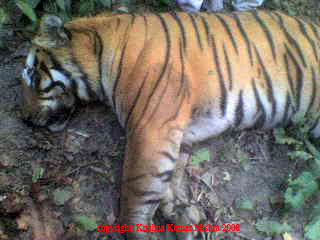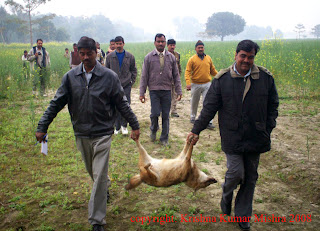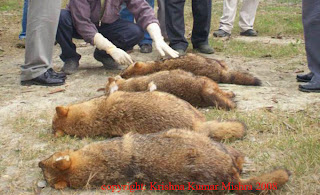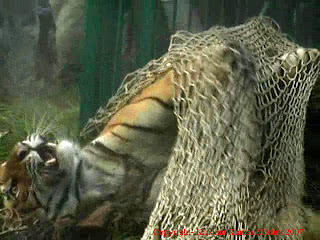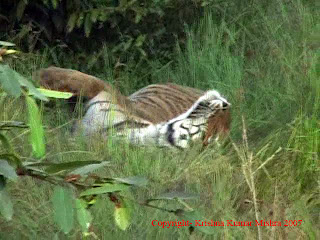
Birds’ haven in Sareli village & their conservation by local communities in Kheri district
For nature lovers and ornithologist it may be interesting to know that the village with the highest Openbill stork (Anastomus oscitans) breeding colony in their respective district Kheri. The Sareli village is in Mitauli block of Kheri district. It is situated 40 Km. From district headquarter Lakhimpur on Maigalganj road. The area is good birds habitat and water is available in abundance are year round. As a result, in village the birds population are increase. Hunting is not a problem here because the villagers welcome and protect of this bird with the belief that they brings mansoon every year. Because Openbill stork population concentrated near water bodies in sareli village in the begining of monsoon. The birds arrived in this village in first week of June and their departure in last week of October every year. These birds are local migratory. Approximately there were 1000 birds nested every year. They prefers of nesting trees like Peepal, Bargad, Babool and Neem in there vicinity.
A total 265±25 nest of storks were counted in 2001, in 2006 there were 300 nests ,The storks prefers of the nesting tree were mostly Babool, Baniyan, Neem, Tamarind and eukalyptus in the village.
Before freedom, the wonderful matter of birds conservation in village Sareli a came head. At that time this village in undertaking of Mahmoodabad Estate (Riyasat), near about 1905 a Estate officer came in this village, who shot many birds with his gun. From this incidents the whole villagers was afraid. The chief of the village named Baldev Prasad beat the officer badly then the officer put up this case in the court. The case was heard at the disputed place.
It is said that when Baldev Prasad was asked that what is your possession upon these birds. He replied, that these birds are my tamed. How did I know that these are your tamed? The court officer said. Then a wonderful incident took place. Baldev Prasad called them all the birds came at once at that place where Baldev Prasad was standing and the case was dismissed.
Since then the conservation is given to the birds by his family generation to generation. It is a success story of bird conservation by local villagers participation.
There are 19 species of storks in the world. Out of which 8 species found in India, Openbill stork familly ciconiidae in which 17 living species are present. The Openbill stork of the genus anastomus, are widely distributed throughout the tropical region of Africa and Asia. The Openbill stork commonly called as Pahari Chiriya or Baktewta by the villagers.
This bird is a white with black in the wings tail. The legs and feets are dull flesh colour. The adult birds have gap between mandible (beak). The local in habitants are mostly agriculturist, agriculture is the main occupation, with wheat, rice and sugarcane being the main crop. One of the biggest pressure on birds is that of wood extraction of nesting trees both for timber and fuel wood. Some trees are common both inside and outside of village. With large groves of Tamarind, Kusums, Neem, Mango, Bamboo, growing in the cultivated areas. Peepal and Baniyan was once common but now scarce. The territorial and social forestry divisions of the forest division created plantation of Babool, Arjuna and Eucalyptus at both sides of the road and certain areas around the village.
Many wader birds species like Black-necked stork, wooly-necked stork and adjutant stork and Sarus crane that common in this region have now become rare due to wet land losses and hunting of the birds out side of the village.
These birds are also prevent to the diseases caused by helminiths,because these birds are mostally feed on snails which is the vector or intermediate host of Trematodes.The diseased caused by trematodes helminiths constitude trematodiasis some of the most common and wide spread diseased by trematodes like Schistosomiasis, Opisthorchiasis, Paragonimiasis, Fasciolopsiasis and Fascioliasis, Trematodes infection on the primary host sheep and second or intermediate host is a fress water snail.The sign of this disease is liver problem, diarrhea, listlessness, loss of appetite and convolution before death.
It (Liver Fluke) mainly affects the liver but it also causes hepatitis and inflammation in the bile ducts ,Due to this, The bile ducts become thickened which is followed by calcification and finally resulting in to the formation of gall stones.The domestic animal like sheep,pig and goats etc. gets the infection by grazing on marshy land and Human being is also infected when they eat fish and aquatic vegetation .
Storks feed on snails and can be usually employed in removing their population.
Here one good natural way of prevention is to protect and conserve openbill storks.
There are main threats of stork habitat is Encroachment of primary habitats (wetlands) of the Openbilled stork by expanding agricultural land ,residential also pose serious threat to the species in the village. Increasing commercial agricultural leads of the heavy use of harmful pesticides and causing adverse impact on feeding requirements of the birds. Destruction of eggs by Kites, Shikara and Rat-snakes. Some people of few particular casts indulge in poaching of the Openbill storks to the limited extent and stealing of its eggs to considerable extant. The biggest pressure on birds is that of wood extraction of nesting trees both for timber and fuel wood. There are unaware people to meaning of conservation. They are protect of this bird only behalf of ancestral possession.
I therefore recommended most urgently to the wild life division of the forest department Uttar Pradesh to give the village some protected status as soon possible.
Written by :-
Krishna Kumar Mishra
77, Shiv Colony, Canal Road,
Lakhimpur-Kheri-262701
Uttar Pradesh-INDIA
Ph. : (05872) 63571
